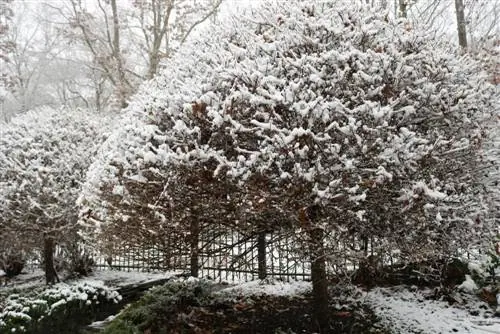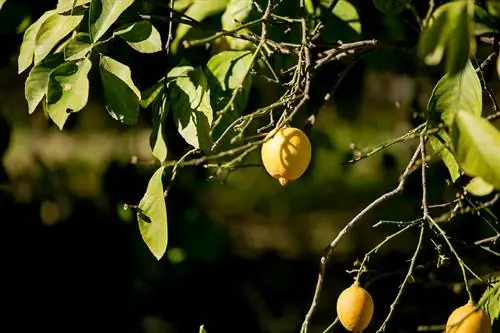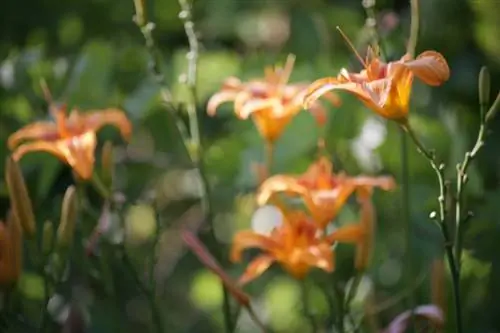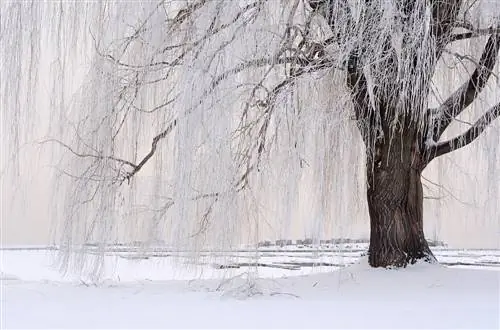- Author admin [email protected].
- Public 2023-12-16 16:46.
- Last modified 2025-01-23 11:21.
Many animals grow thick, warm fur before winter or simply hibernate during the cold season. We humans put on thick jackets, hats and gloves to protect ourselves from the cold. But how do trees actually survive the winter? And is special winter protection even necessary? We have compiled this information for you in this article.
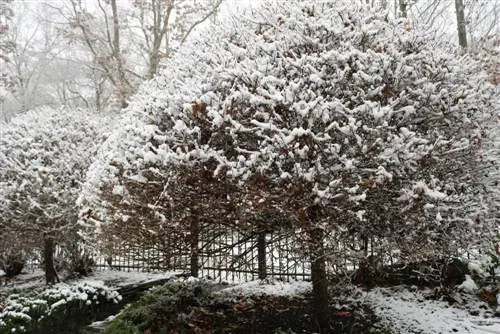
How do I protect trees in winter?
Trees survive the winter through natural protective mechanisms such as leaf fall, root cover and insulating layers of wood. You can support trees by planting site-adapted, winter-hardy species, using crown pruning, lime coatings or brushwood as winter protection and stopping fertilizing in good time.
Natural protective mechanisms of deciduous trees
Deciduous trees usually have green foliage, which turns yellow or reddish in autumn and eventually falls off. But why is that even the case? The fall of leaves is a protective mechanism for the tree because the leaves need to be supplied with water and nutrients. If they remained on the tree during the low-light winter months, the tree would not be able to supply them with sufficient moisture and would gradually dry out. Instead, it simply throws them off and goes into hibernation. The autumnal color is explained by the decreasing photosynthesis: As long as this is in full swing, the leaves remain green due to the chlorophyll. If the light intensity decreases, the proportion of green dye also decreases until it is finally replaced by yellow and red tones.
Other natural protective measures:
- However, the fallen leaves have another function: they cover the root area of the tree and therefore protect it from the cold.
- Since twigs and branches cannot simply be thrown off, the tree wraps itself in an insulating layer of wood. This consists of the water-bearing Cambrian, which is covered by the dry bark.
However, not all deciduous trees shed their leaves in autumn, some are evergreen. These have developed other protective mechanisms against the cold. The same applies to most conifers, with the exception of the European larch.
How to support trees in winter
Basically, you should only plant trees in the garden that are sufficiently hardy. This applies to all native species, but many imported, frost-hardy deciduous and coniferous trees are also suitable. More sensitive species, on the other hand, should only be planted in appropriately protected locations or cultivated in a pot. You can also support hardy trees in winter with these measures:
- Cut back the crowns in autumn. However, this only works with some deciduous trees.
- Coniferous trees, on the other hand, are not pruned.
- Distribute the fallen leaves evenly over the tree disc.
- If necessary, mulch these.
- Cutted scions are very suitable for winter protection.
- Fruit trees in particular get a coat of lime.
- This is sometimes also useful for other deciduous trees in very sunny locations.
If you fertilize your trees, you should stop fertilizing (€10.00 on Amazon) by the end of July at the latest so that young shoots still have the chance to mature.
Tip
Winter-hardy trees in pots can usually overwinter outside, but you should wrap the pot with an insulating fleece and cover the substrate with a thick layer of mulch and spruce or fir branches. The potted tree should be watered on frost-free days so that it does not dry out.

